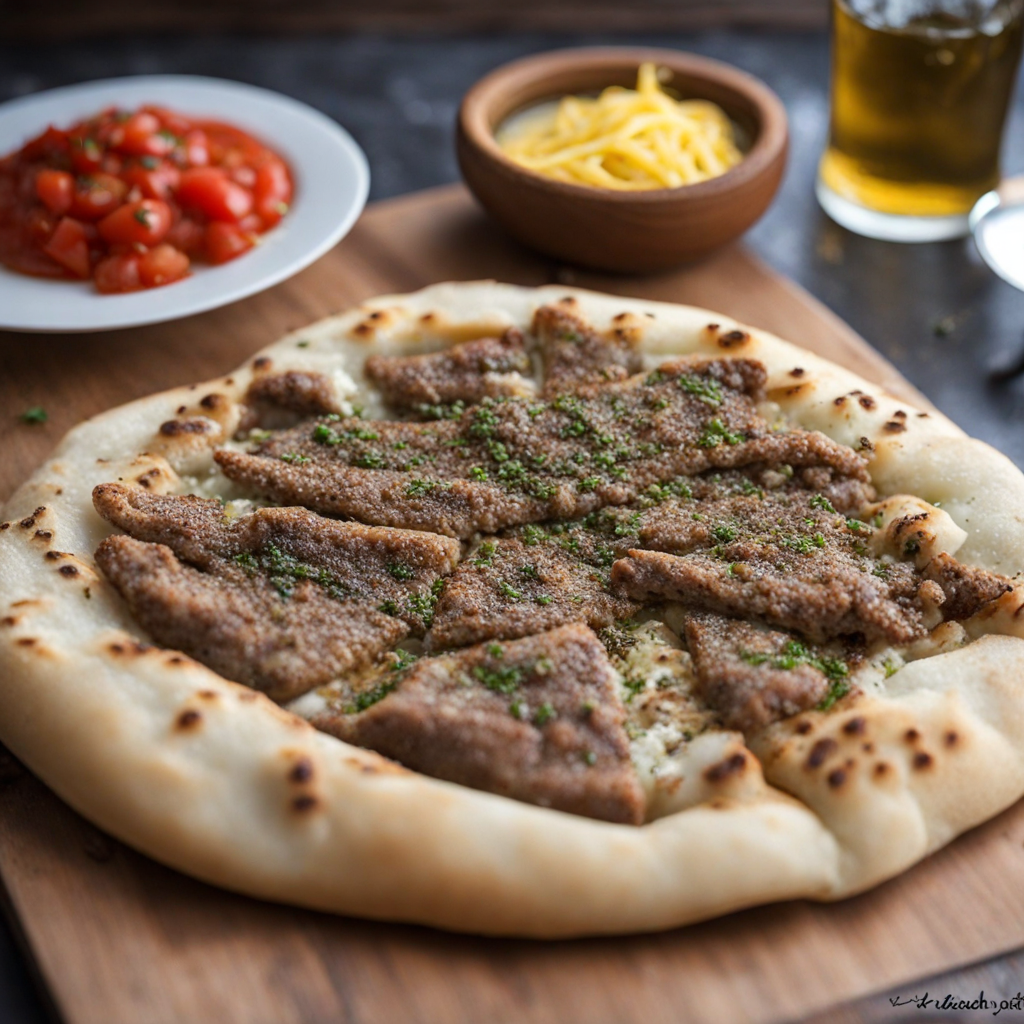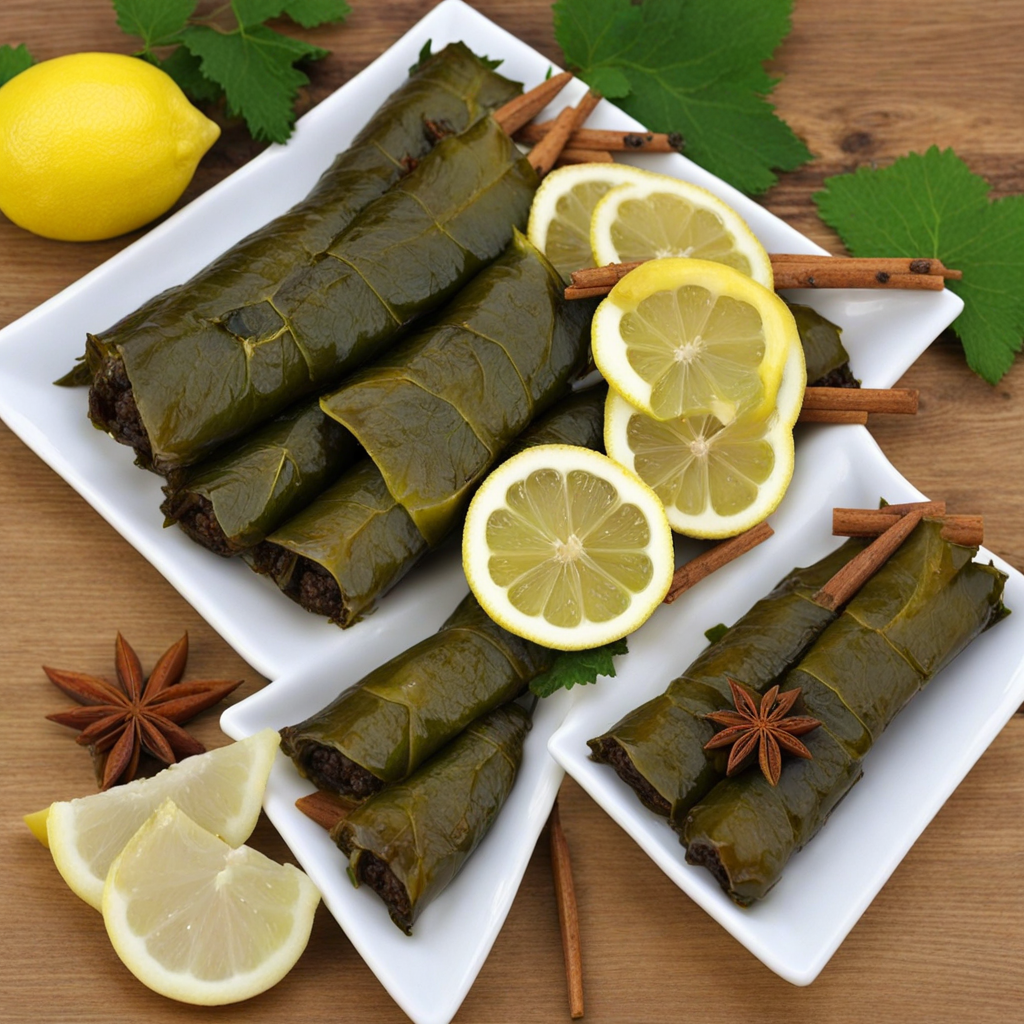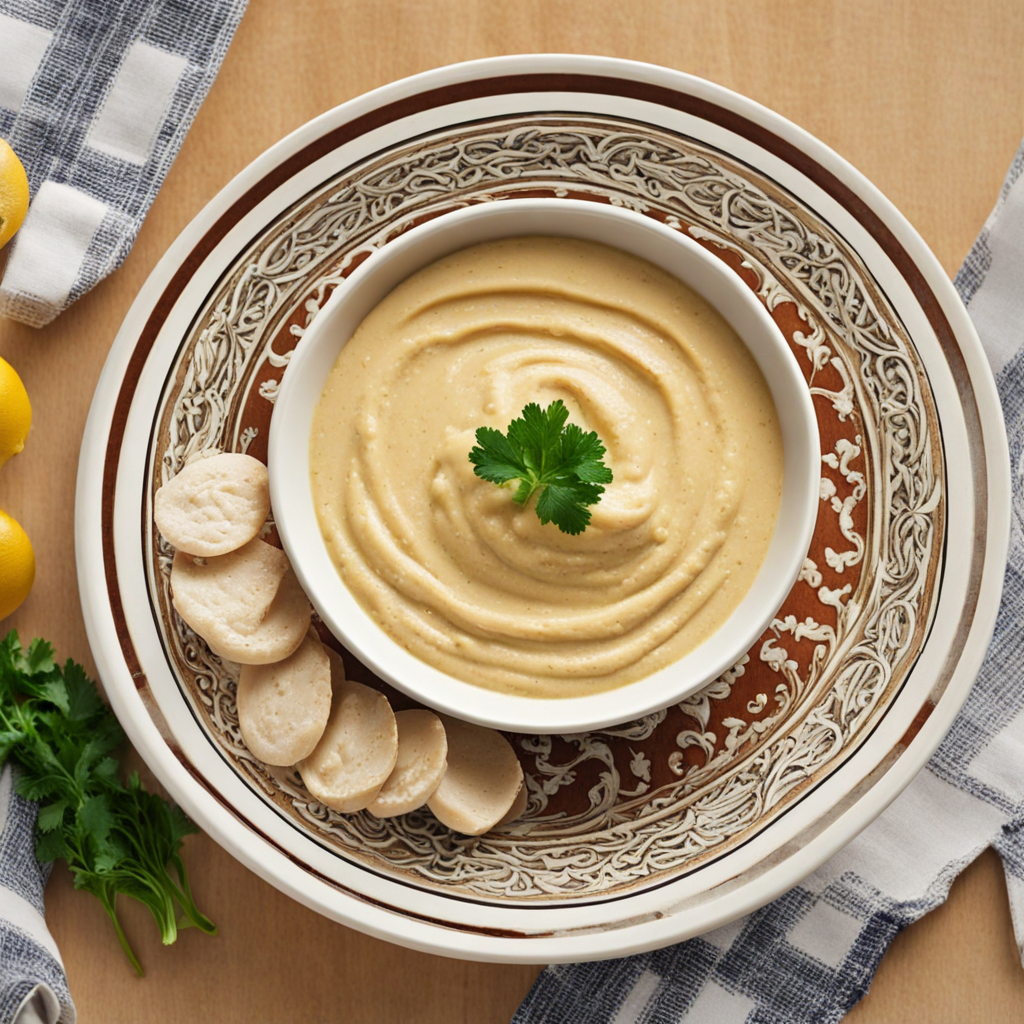Znoud El Sit
Znoud El Sit is a beloved Syrian dessert that beautifully showcases the country's rich culinary heritage. This delightful treat consists of delicate, crispy pastry rolls that are typically filled with a luscious mixture of sweetened cream or ricotta cheese. The name translates to "the arms of the lady," which perfectly encapsulates its charming and inviting appearance. The pastry is often made from thin layers of dough, resembling phyllo, that are rolled and fried to a golden crisp, providing a satisfying crunch with every bite. Once fried, these rolls are generously soaked in a fragrant sugar syrup infused with hints of rose water or orange blossom, giving them a sweet yet aromatic profile. The syrup seeps into the crispy exterior, creating a harmonious balance between the crunchy texture and the creamy filling. Each bite offers a delightful contrast, as the exterior crackles under the pressure of your teeth, revealing the rich, creamy center. It's this unique textural experience that makes Znoud El Sit a standout dessert in Syrian cuisine. Often garnished with a sprinkle of crushed pistachios or walnuts, Znoud El Sit not only delights the palate but also pleases the eye. The vibrant green nuts add a pop of color, enhancing the overall appeal of this sweet treat. Whether enjoyed during special occasions or as a comforting everyday indulgence, Znoud El Sit is a testament to the artistry of Syrian desserts, inviting food lovers to explore the layers of flavor and tradition that it embodies.
How It Became This Dish
The History of 'زنود الست' (Znood al-Sit): A Culinary Gem from Syria #### Origin and Etymology 'زنود الست' (Znood al-Sit), which translates to "the arms of the lady," is a traditional Syrian dessert that embodies the rich culinary heritage of the Levant. Its origins can be traced back to the Ottoman Empire, a period marked by cultural exchange and the blending of diverse culinary traditions. The name itself is evocative, suggesting both delicacy and femininity, perhaps symbolizing the nurturing aspect of women in the kitchen. The dessert is primarily made from thin sheets of pastry, akin to phyllo dough, known as 'yufka' in Turkish, which reflects the influence of the Ottoman culinary tradition. The filling typically consists of a sweet mixture of cream, often flavored with rosewater or orange blossom water, and the pastry is rolled and fried until golden brown before being soaked in syrup. This combination of textures and flavors makes Znood al-Sit a true representation of Levantine sweet-making. #### Cultural Significance Znood al-Sit holds a special place in Syrian culture and is often associated with festive occasions and family gatherings. It is a staple in celebrations such as weddings, Eid al-Fitr, and Ramadan. The dessert serves not only as a sweet treat but also as a symbol of hospitality and generosity, reflecting the traditional Syrian value of sharing food with guests. In Syrian culture, food is more than sustenance; it is a form of storytelling. Each dish, including Znood al-Sit, carries with it a piece of history, often passed down through generations. The preparation of this dessert often involves family members coming together, particularly women, which further cements its cultural significance as a communal activity. Moreover, Znood al-Sit is not just a dessert but a cultural artifact that showcases the artistry and skills of Syrian pastry chefs. The delicate layers of pastry require a level of skill and patience, and the ability to create the perfect balance between the cream filling and the syrup is seen as a mark of culinary prowess. In this way, making Znood al-Sit can be viewed as a rite of passage for many Syrian women, symbolizing their role in preserving culinary traditions. #### Development Over Time The development of Znood al-Sit can be seen as a reflection of the broader historical changes in Syria and the Levant. During the Ottoman period, the exchange of culinary techniques and ingredients across the empire introduced new flavors and ideas into Syrian kitchens. The use of rosewater and orange blossom, for example, became a hallmark of many Middle Eastern desserts, and Znood al-Sit is no exception. As Syria moved into the 20th century, the dessert began to be popularized beyond its regional roots. The migration of Syrians around the world, particularly during the civil unrest and conflict in recent years, has led to the internationalization of many traditional dishes, including Znood al-Sit. Syrian expatriates have introduced this dessert to new audiences, sharing its flavors and the stories behind it with people from different cultural backgrounds. In modern times, Znood al-Sit has evolved while still retaining its traditional essence. Contemporary chefs have begun to experiment with the classic recipe, introducing new ingredients and techniques. Variations of the dessert now include different fillings, such as pistachio or chocolate, and some even experiment with alternative sweeteners or gluten-free options. This evolution showcases the adaptability of traditional recipes in response to changing tastes and dietary needs. #### The Making of Znood al-Sit The preparation of Znood al-Sit is an art form in itself. The process begins with making or purchasing thin layers of dough, which are then carefully rolled around a rich filling of cream, often made from clotted cream or a similar dairy product. The rolled pastries are then fried in oil until crispy and golden, creating a delightful contrast to the rich, creamy filling. Once fried, the Znood al-Sit is drenched in a simple syrup made from sugar, water, and a hint of lemon juice, which adds brightness and balances the sweetness. The syrup is typically flavored with rose or orange blossom water, enhancing the aromatic experience of the dessert. The final touch often includes a sprinkle of crushed pistachios on top, adding both flavor and a vibrant pop of color. #### The Role of Znood al-Sit in Modern Syria Today, Znood al-Sit remains a beloved dessert among Syrians, both at home and abroad. In the face of adversity and displacement, the dessert serves as a reminder of home for many Syrian refugees. It is often made during family gatherings or special occasions, providing comfort and a sense of normalcy amidst turmoil. Moreover, with the rise of social media and food blogging, Znood al-Sit has gained attention from a wider audience. Recipes and preparation videos have circulated online, allowing food enthusiasts around the world to try their hand at making this exquisite dessert. This digital sharing has not only helped preserve the recipe but has also fostered a greater appreciation for Syrian cuisine. #### Conclusion In summary, Znood al-Sit is more than just a dessert; it is a testament to the resilience and richness of Syrian culinary traditions. From its origins in the Ottoman Empire to its adaptation in modern kitchens, this dessert encapsulates the history, culture, and communal spirit of Syria. As it continues to evolve and reach new audiences, Znood al-Sit remains a cherished symbol of heritage, hospitality, and the enduring power of food to connect people across borders. Whether enjoyed at a festive gathering or shared among friends, Znood al-Sit carries with it the flavors of history and the warmth of Syrian hospitality.
You may like
Discover local flavors from Syria







